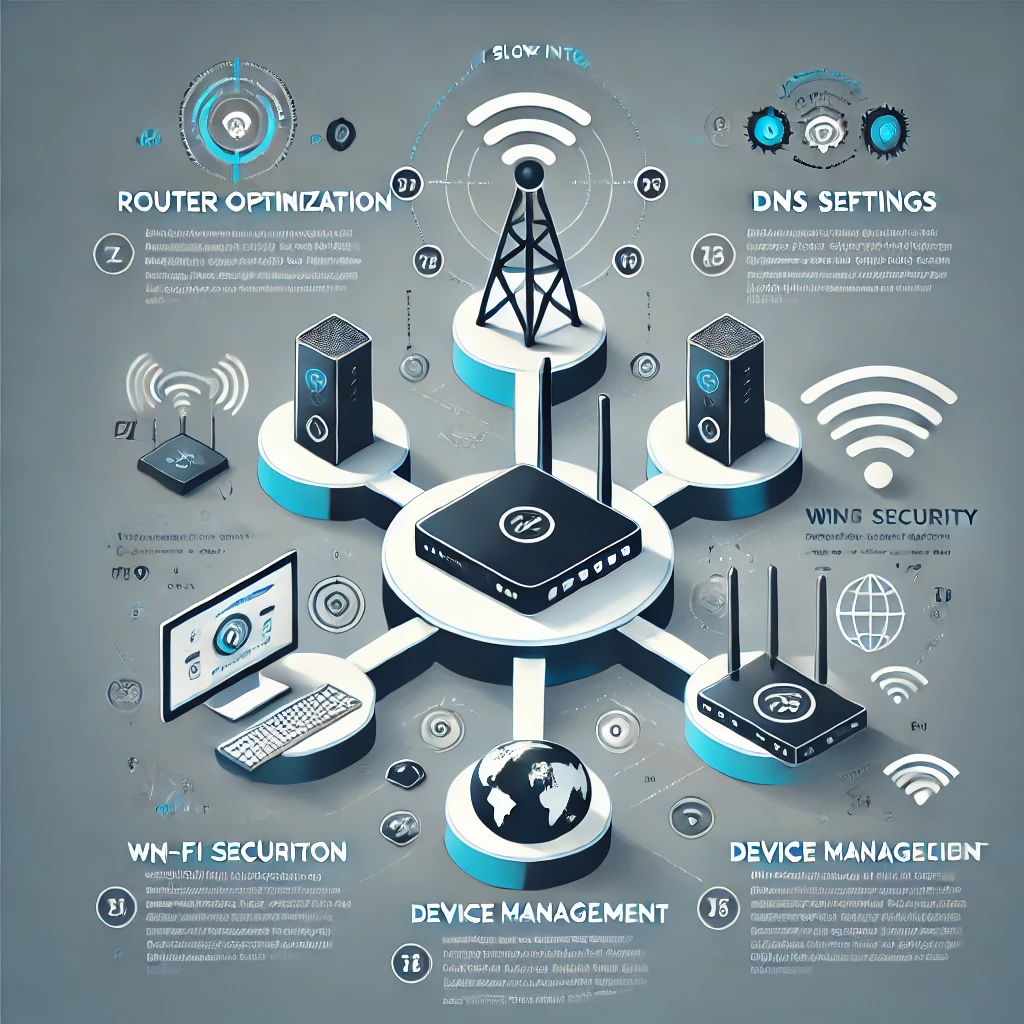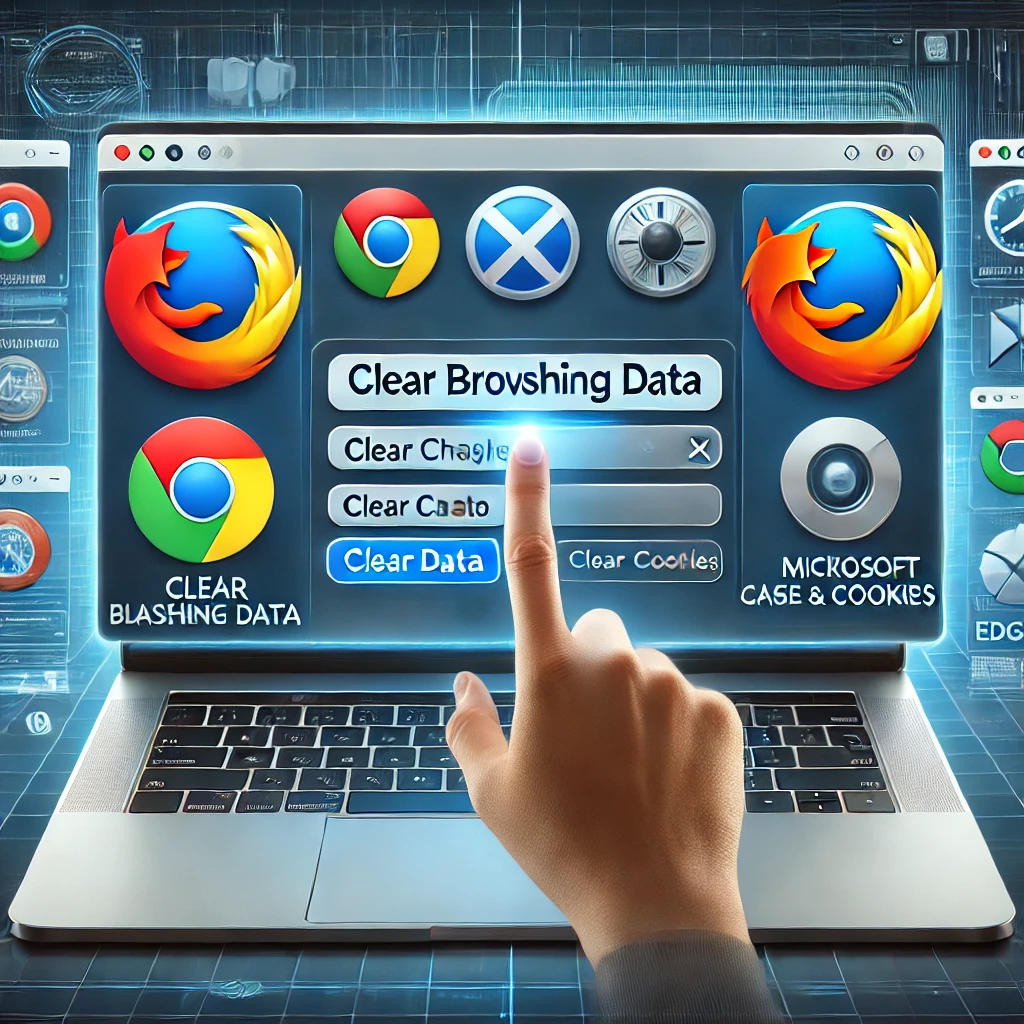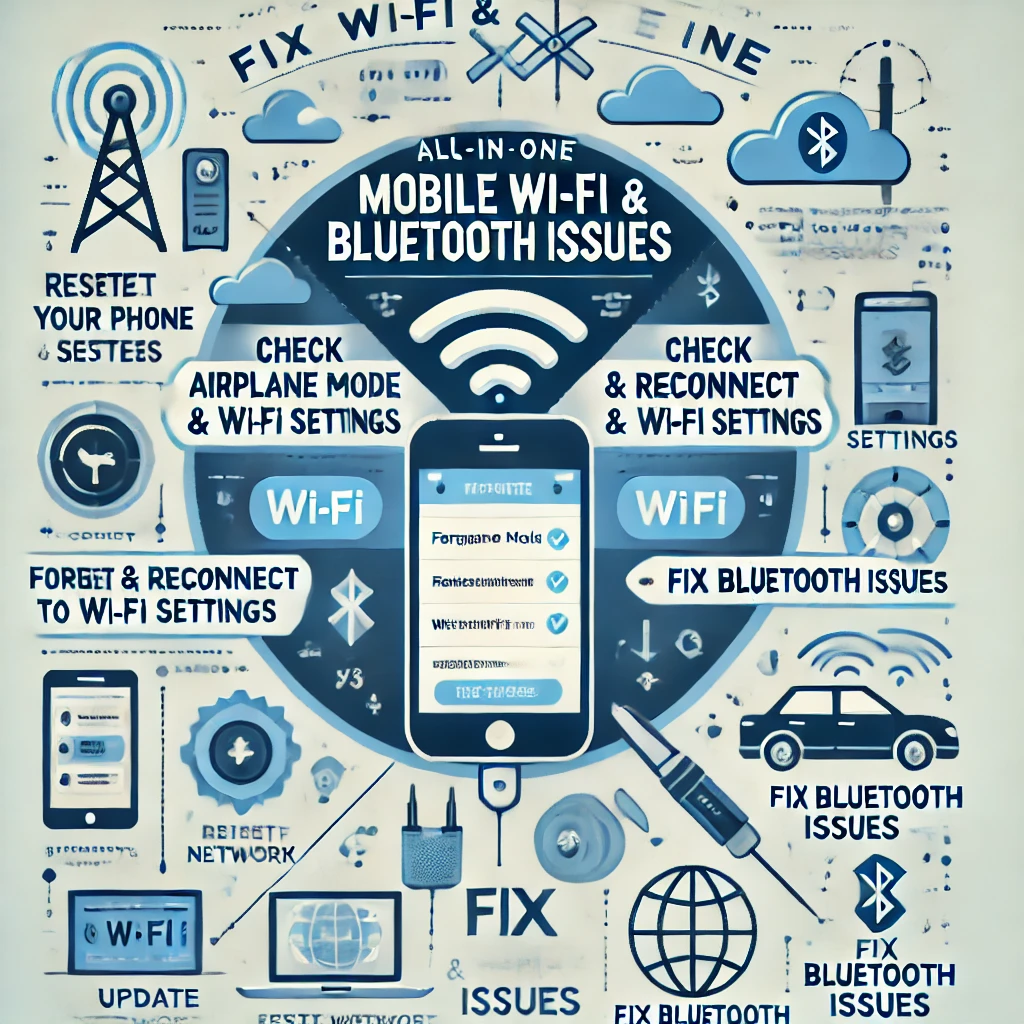A slow internet connection can be incredibly frustrating, whether you’re working, gaming, streaming, or just browsing. But don’t worry—this guide will walk you through step-by-step solutions to troubleshoot and speed up your internet connection effectively.
Step 1: Check Your Internet Speed & Compare It to Your Plan
Before making any changes, it’s important to understand how fast your internet currently is and compare it to the speed you’re paying for.
✅ How to Test Your Internet Speed:
1️⃣ Visit Speedtest.net or Fast.com.
2️⃣ Click “Go” and wait for the test to complete.
3️⃣ Take note of your Download Speed, Upload Speed, and Ping.
What Your Results Mean:
- Download Speed: How fast data is transferred to you (important for streaming, browsing, downloading).
- Upload Speed: How fast data is sent from you (important for video calls, gaming, cloud uploads).
- Ping (Latency): The delay in communication with a server (low ping = better for gaming & video calls).
📌 Compare your speed test results with your internet plan. If the speed is significantly lower, move on to the next steps.
Step 2: Restart Your Router & Modem (The Quickest Fix!)
Restarting your router is one of the simplest yet most effective ways to improve internet speed.
✅ How to Restart Properly:
1️⃣ Unplug both your modem and router from power.
2️⃣ Wait 30-60 seconds to clear temporary memory.
3️⃣ Plug the modem back in first and wait until it fully powers up.
4️⃣ Then, plug the router back in and let it reconnect.
💡 Why This Works? Restarting clears cache, refreshes the connection, and resolves minor network glitches.
Step 3: Optimize Your Router Placement for Better Wi-Fi Signal
Your Wi-Fi signal strength is highly affected by where your router is placed.
✅ Best Practices for Router Placement:
✔️ Keep it central in your home for even coverage.
✔️ Place it on a higher shelf (avoiding floors & corners).
✔️ Avoid placing it near thick walls, microwaves, or metal objects.
✔️ Ensure no large furniture or electronics are blocking the signal.
💡 Bonus Tip: If your house is large, consider getting a Wi-Fi extender or mesh system to eliminate dead zones.
Step 4: Reduce Network Overload (Too Many Devices = Slow Speed)
If too many devices are using the network, your internet slows down due to limited bandwidth.
✅ Fix Network Overload by:
✔️ Disconnecting unused devices (smart TVs, tablets, gaming consoles).
✔️ Stopping background downloads, updates, or streaming.
✔️ Setting up Quality of Service (QoS) in your router settings to prioritize important tasks like gaming or video calls.
💡 How to Check What’s Using Your Internet:
- Log into your router settings (type 192.168.1.1 in a browser).
- Check for connected devices and bandwidth usage.
- Remove unknown or unnecessary devices.
Step 5: Secure Your Wi-Fi from Unauthorized Users
If neighbors or strangers are using your Wi-Fi, it drastically reduces your speed.
✅ How to Secure Your Wi-Fi:
✔️ Change Your Wi-Fi Password (use WPA3 or WPA2 security).
✔️ Disable WPS (Wi-Fi Protected Setup) as it’s a security risk.
✔️ Set up MAC address filtering to control which devices can connect.
✔️ Hide your SSID (Wi-Fi network name) to prevent unauthorized access.
💡 Pro Tip: Check your router’s connected devices list to ensure only your devices are using the internet.
Step 6: Update Your Router Firmware for Performance & Security
Outdated router firmware can lead to slow speeds, security issues, and connection drops.
✅ How to Update Router Firmware:
1️⃣ Log into your router admin panel (192.168.1.1 or as per manual).
2️⃣ Navigate to the Firmware or Software Update section.
3️⃣ Click “Check for Updates” and install if available.
💡 Do this every 3-6 months to ensure optimal performance.
Step 7: Switch to a Faster DNS for Quicker Browsing
Your ISP’s default DNS (Domain Name System) may be slow, causing websites to load sluggishly.
✅ Faster DNS Options:
- Google DNS → 8.8.8.8 & 8.8.4.4
- Cloudflare DNS → 1.1.1.1 & 1.0.0.1
✅ How to Change DNS on Windows:
1️⃣ Open Control Panel → Network & Internet → Network Connections.
2️⃣ Right-click your active network and choose Properties.
3️⃣ Select Internet Protocol Version 4 (TCP/IPv4) and click Properties.
4️⃣ Choose “Use the following DNS server addresses” and enter the new values.
💡 Faster DNS helps improve website loading speeds and online gaming.
Step 8: Use a Wired Connection for Faster & Stable Internet
Wi-Fi is convenient, but Ethernet (wired connection) is always faster.
✅ Why Ethernet is Better:
✔️ Provides faster speeds than Wi-Fi.
✔️ No signal interference from walls or other devices.
✔️ More stable connection, especially for gaming & video calls.
💡 If possible, connect your PC, gaming console, or smart TV directly via Ethernet.
Step 9: Upgrade Your Internet Plan or Router If Necessary
If you’ve tried everything and your internet is still slow, you may need a better plan or router.
✅ How to Determine If You Need an Upgrade:
✔️ Check if your internet plan meets your usage needs (gaming, 4K streaming, etc.).
✔️ Upgrade to a Wi-Fi 6 router for better speed & range.
✔️ Consider fiber internet if available in your area.
💡 If you’re unsure, call your ISP and discuss your options!
🚀 Conclusion: Say Goodbye to Slow Internet!
By following this step-by-step guide, you can drastically improve your internet speed:
✅ Test & compare your internet speed with your plan.
✅ Restart your router & optimize placement for better Wi-Fi.
✅ Reduce device overload & secure your Wi-Fi from freeloaders.
✅ Update firmware & switch to a faster DNS.
✅ Use Ethernet or upgrade your plan/router for even better speeds.
💡 Which step helped you the most? Let us know in the comments! 📡⚡
// You May Like //
🔗 How to Fix Mobile Wi-Fi & Bluetooth Connection Problems
🔗 Your Phone Battery Drains Fast- How to Fix It
🔗 How to Fix Software Crashes & Freezing Issues
![]()





